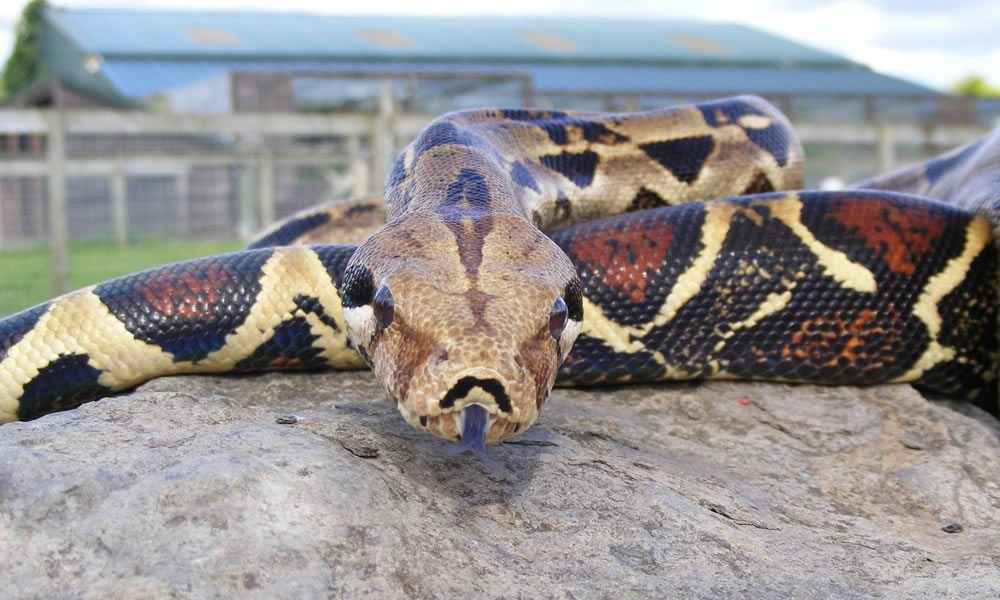

However, the discovery of the Titanoboa fossils satisfies not only our curiosity and fascination to know more about the animals that once inhabited our world. Their girth measured more than 3 ft (1 m) at the thickest part of the body, the center. It weighed more than a 1000 kg and measured 14 m or approximately 50 feet in length. It is the only known species in the genus and is the biggest, longest, and heaviest snake ever discovered, as it supplanted the Gigantophis the previous record holder at 33 ft. Some scientists think that Titanoboa was the find of the decade and that it's one of the most important since the Tyrannosaurus rex findings in 1902. There the scientists also found fossilized leaves and plants and some giant reptiles like giant turtles, and the biggest crocodiles in the history of fossil records.

In 2009, the fossils of 28 individual Titanoboa cerrejonensis were found in Colombia, in the Cerrejón Formation in the coal mines of Cerrejón in La Guajira. So, you know what to do.This was a period of 10 million years immediately following the dinosaur extinction event. With the mass extinction event that marked the end of the Mesozoic Era, those animals that remained, quickly diversified and took up majority of the ecosystem niches left vacant by the death of the dinosaurs. This is because the fossil record is notoriously bad at this time, and therefore we're probably just not finding the fossils needed to help fill the gaps in the puzzle. This distinction in time and space suggests that during the Cretaceous, these strange snakes were much more widespread across the southern continents, although it is remains difficult to know exactly what happened. Its scaly cousin was much older, living in the latest Cretaceous, before the great dinosaur extinction. Down the ladder Gigantophis went.Ī new analysis of Gigantophis' evolutionary relationships found that its closest relative was an Indian species called Madtsoia. However, in 2009, Titanoboa was discovered from the Paleocene of Colombia, which has since gained notorious fame for its immense slithery size, coming in at around 12-13 metres in length. When discovered, researchers thought that Gigantophis was the biggest of all snakes ever known, and an analysis in 2004 estimated that it could grow to around 10 meters in length!

Instead, Gigantophis appears to have been confined to the late Eocene of North Africa.īy comparing the vertebrae to those of living snakes, they were able to estimate that Gigantophis was around 7 metres in length. What they discovered is that other material that had been referred to this species from Pakistan was markedly different, and most likely a new species altogether. They compared them to similar fossils from across North Africa and Pakistan, to see what they could learn about the mystery giant snake. supervisor!) recently undertook the mammoth task of redescribing and analysing these vertebrae. Jonathan Rio and Phil Mannion (my old Ph.D. Geographic distribution of Madtsoiidae, plotted on a present-day map. Previous research from the early 20th century only briefly figured and described the specimens, which have otherwise remained unstudied in the Egyptian Geological Museum in Cairo for more than a century. However, Gigantophis isn't that well understood by scientists, and only 20 vertebra are known in total for the species. From the name, you can probably tell that this was one hefty snake, bigger than an anaconda and making most modern species look like something you'd find in a pick n mix. It was discovered from 40 million year old rocks in very, very ancient Egypt. The first named madtsoiid was back in 1901, and called Gigantophis garstini. They are now extinct, with a range of around 100 million years, making them one of the longest lived lineages ever. One particular group of snakes, Madtsoiidae, used to be widely distributed around the world back in the Cretaceous when the dinosaurs ruled. Over geological time, they have come in all sorts of shapes and sizes (typically still sausage-ish shaped), and have a unique evolutionary history.


 0 kommentar(er)
0 kommentar(er)
